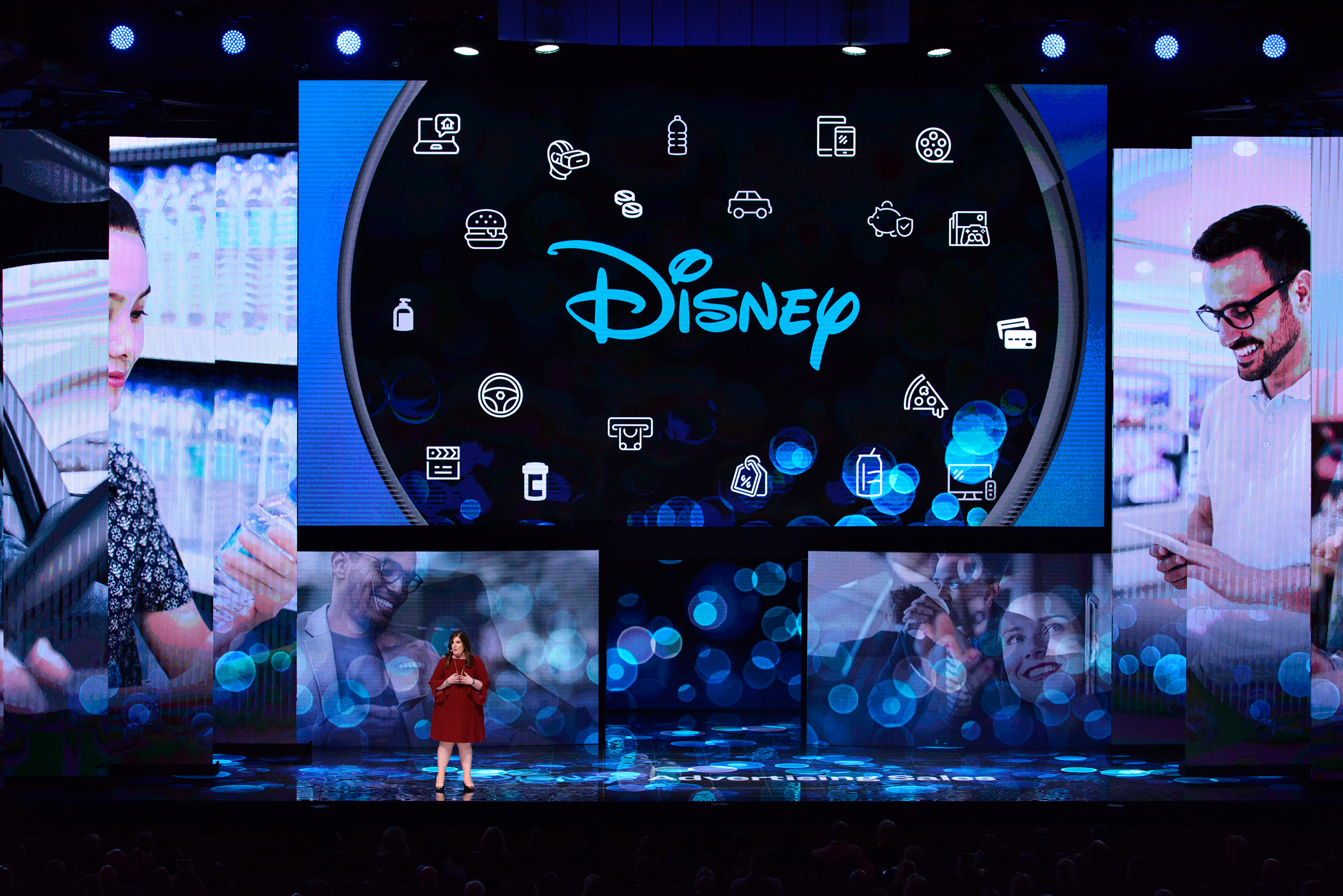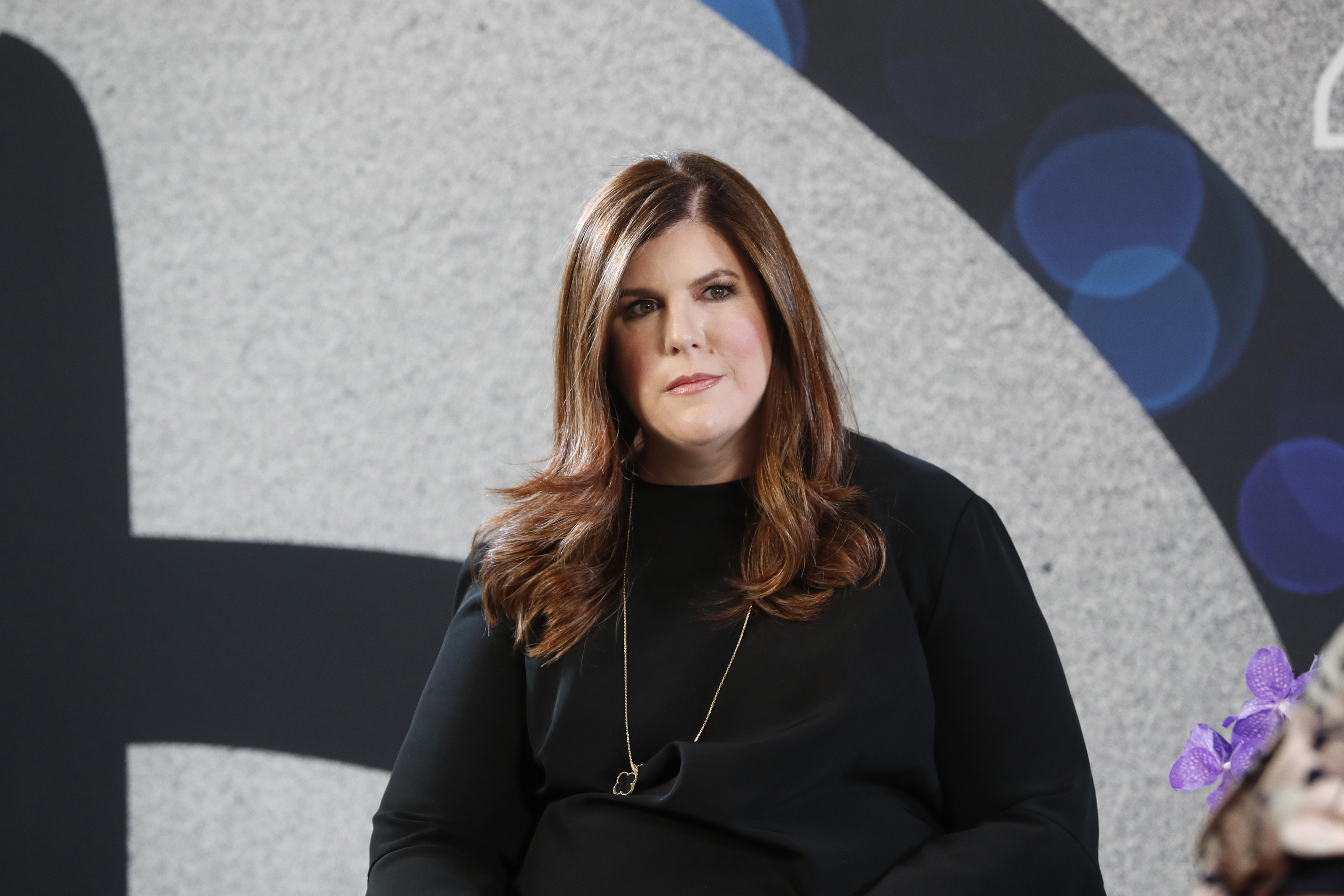Disney Sets Virtual Upfront Roadshow for Buyers, Clients
Meetings set for weeks of May 25, June 1

Instead of a single big presentation--virtual or otherwise--Disney Advertising Sales is planning to use a series of 30-minute roadshow videos to make its pitch to media buyers and clients.
Disney’s traditional Lincoln Center event, along with the other big upfront extravaganzas, were wiped out by the Coronavirus, which ruled out large gatherings and now has most media people working from home.
Disney is planning seven presentations during the weeks of May 25 and June 1--one for each of the six big media agency holding companies and one for clients that deal directly with Disney or work through smaller agencies.
The presentations will be tailored to each of the agencies, with talent from Disney programming acknowledging the buyer and clients in the room.
“We want to make it a little bit more personal and intimate in terms of the conversation,” said Rita Ferro, president of Disney Ad Sales.
The presentations will focus on how Disney created client solutions and will address how Disney worked with clients during the crisis and plans for continuing to grow partnerships, Ferro said.
Disney’s Hulu unit will be a part of the presentations. Hulu will also have presentation during the Digital Content NewFronts the week of June 22.
Broadcasting & Cable Newsletter
The smarter way to stay on top of broadcasting and cable industry. Sign up below
Disney acquired control of Hulu last year and Hulu’s head of ad sales, Peter Naylor left Hulu in April.
Ferro said that Hulu will be a part of clients ad packages in this year’s upfront. “We’re going to do one deal,” she said. “We’re looking at ways the Disney side can add value to how Hulu goes to market and really taking advantage of the innovative ad products and learnings on the Hulu said to help our addressable business on the Disney side.”
Streaming has become a hot property, and Hulu is a leader in the ad supported streaming space, but Ferro sees clients making one premium video buy across all screens, which is good considering the quality and scale of Disney’s content and distribution on all platforms. With Hulu, 35% to 40% of Disney’s inventory is addressable, she notes.
How and when this year’s upfront negotiations will take place are still to be determined.

“I think the key this year is going to be flexibility in every sense of the word,” Ferro said.
In terms of timing, Ferro noted that some companies are doing very well, and will want to move aggressively. “We need to be able to do that now and move quickly, she said.
Other companies will need a little bit more time to figure out what the back half of the year looks like for them. “We’ll be ready whenever they are,” she said.
And some will want to do calendar deals that run from January through December, instead of the broadcast year, which starts with the fourth quarter.
“If that’s what works for them, we’ll be available to do that,” said she. “We just need to have that open-mindedness and flexibility.”
Right now, advertisers are considering whether or not to exercise their options not to buy the third-quarter advertising they committed to buy in the last upfront. Ferro said clients are already asking till the end of the month to exercise those options, and Disney is granting those postponements. So far, options have been better than expected, but it’s still early, she said.
“There was clearly a rush to adjust campaigns and schedules and everything at the beginning of all of this six to eight weeks ago. I think what you see now is clients trying to re-engage in terms of what their business looks like as things are starting to turn on,” she said.
Some clients that moved out of the second quarter early in the crisis are looking to come back, she added.
Disney can certainly sympathize with businesses that have been affected by the pandemic. Disney’s first quarter earnings were pounded as its parks and movie business were shut down by the virus. “I understand holistically as a media partner because I sit in a company that’s been highly disrupted. We understand what they’re dealing with because we’re dealing with it too,” Ferro said.
In some ways the innovations that companies made to keep their businesses afloat during the crisis--including using more real-time data and shortening supply chains, has Ferro encouraged. “I’m excited about what the future is going to be, but I’m not closing my eyes to the hard reality of what the impact has been to our clients.”
Will this year’s approach to the upfront mean a different way of doing business next year? Ferro said it was too early to speculate.
“We’re always open to any opportunity to look at things differently,” she said.
But Ferro noted that clients spend a lot of their ad dollars on sports and with NFL and college football starting in the fall, the traditional upfront schedule might give clients a good opportunity to look at the sports budgets in the context of their overall marketing plans.
Jon has been business editor of Broadcasting+Cable since 2010. He focuses on revenue-generating activities, including advertising and distribution, as well as executive intrigue and merger and acquisition activity. Just about any story is fair game, if a dollar sign can make its way into the article. Before B+C, Jon covered the industry for TVWeek, Cable World, Electronic Media, Advertising Age and The New York Post. A native New Yorker, Jon is hiding in plain sight in the suburbs of Chicago.

